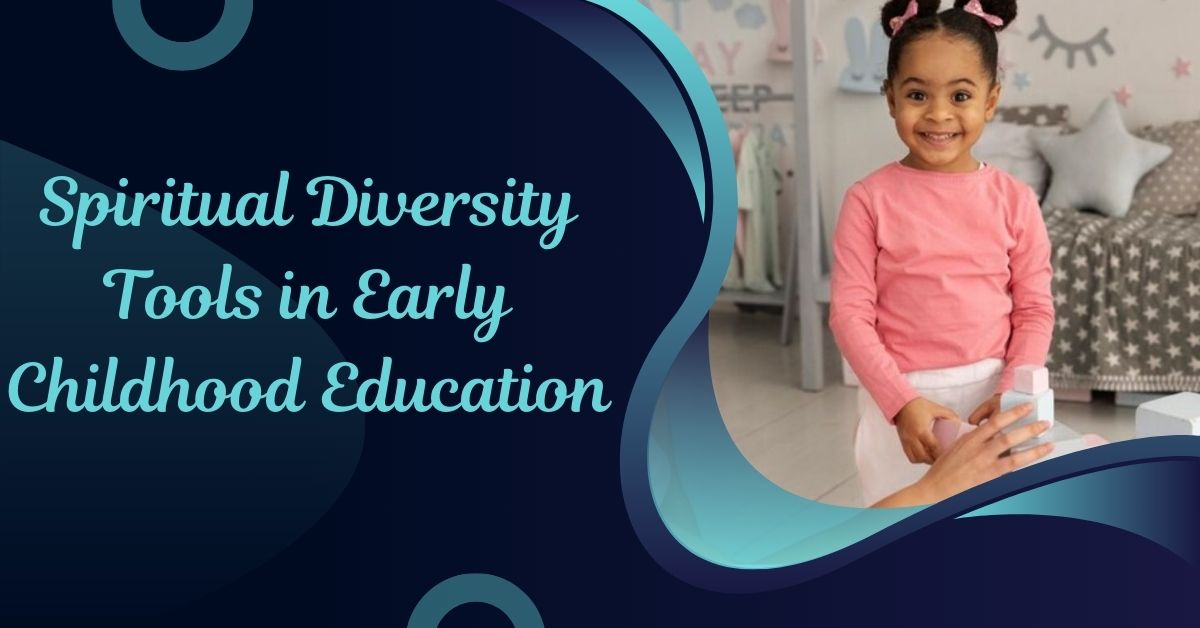In a world rich with diverse cultures and beliefs, it is essential to introduce children to the concept of spiritual diversity from an early age. This is where “firstbasegloves.net spiritual diversity tools in early childhood education” come into play. These tools are designed to help young learners appreciate and respect various spiritual and cultural perspectives. This guide explores the importance of these tools, how they can be integrated into early childhood education, and their impact on young minds.
Introduction to Spiritual Diversity Tools in Early Childhood Education
Spiritual diversity tools in early childhood education are resources and strategies used to introduce young children to a variety of spiritual and cultural beliefs. These tools aim to:
- Foster inclusivity and respect for different beliefs.
- Encourage understanding and empathy among young learners.
- Create a learning environment that celebrates diverse perspectives.
At firstbasegloves.net, spiritual diversity tools are designed to be engaging and age-appropriate, ensuring that children can grasp these concepts in a meaningful way.
Why Spiritual Diversity Matters in Early Childhood Education
The Benefits of Introducing Spiritual Diversity Early
Introducing spiritual diversity in early childhood education has several benefits:
- Promotes Inclusivity: Children learn to respect and accept different beliefs, which helps in creating a more inclusive society.
- Builds Empathy: Understanding diverse perspectives helps children develop empathy and compassion for others.
- Encourages Open-Mindedness: Exposure to various beliefs encourages children to think critically and be open-minded.
- Prepares for a Diverse World: In a globalized world, being aware of different beliefs and cultures is crucial for effective communication and cooperation.
Addressing Misconceptions
Many believe that discussing spiritual diversity is too complex for young children. However, age-appropriate tools and strategies make these concepts accessible and engaging for young learners. By using simple language and interactive activities, educators can introduce spiritual diversity in a way that is both educational and enjoyable.
Key Tools for Teaching Spiritual Diversity
Firstbasegloves.net offers a variety of tools designed to support spiritual diversity in early childhood education. Here are some key resources:
Books and Storytelling
Books are a powerful tool for introducing spiritual diversity. Stories from various cultures and beliefs can help children understand different perspectives in an engaging manner. Look for books that:
- Feature diverse characters and settings.
- Present different cultural practices and beliefs.
- Encourage discussions about the story’s themes and characters.
Storytelling can also be used to share traditions, rituals, and values from various cultures, making it a dynamic way to explore spiritual diversity.
Educational Games and Activities
Educational Games that incorporate spiritual diversity themes can make learning fun and interactive. Examples include:
- Cultural Role-Playing: Children can dress up and act out different cultural practices and traditions.
- Diversity Puzzles: Puzzles that feature symbols, landmarks, or people from various cultures can spark discussions about different beliefs.
- Celebration Days: Host events that celebrate different cultural or spiritual holidays, allowing children to experience and learn about these traditions firsthand.
Activities such as art projects, music, and dance can also be used to explore different cultures and beliefs, helping children engage with spiritual diversity in a creative way.
Classroom Environment
Creating a classroom environment that reflects spiritual diversity is essential. This can be achieved by:
- Displaying Diverse Materials: Use posters, maps, and other visual aids that showcase different cultures and beliefs.
- Inclusive Decor: Incorporate symbols and artifacts from various traditions in the classroom decor.
- Welcoming Atmosphere: Foster an environment where every child feels valued and included, regardless of their background.
Implementing Spiritual Diversity Tools in the Classroom
Integrating into Daily Lessons
Spiritual diversity can be integrated into daily lessons through:
- Thematic Units: Design units around themes that explore different cultures and beliefs.
- Discussion Time: Allocate time for discussions about different practices and values, encouraging children to ask questions and share their thoughts.
- Collaborative Projects: Engage children in projects that explore cultural and spiritual diversity, fostering teamwork and mutual respect.
Training and Professional Development
Educators should receive training on how to effectively use spiritual diversity tools. Professional development opportunities can include:
- Workshops and Seminars: Attend workshops that focus on teaching spiritual diversity in early childhood education.
- Peer Learning: Collaborate with colleagues to share ideas and strategies for incorporating spiritual diversity into the curriculum.
- Resource Sharing: Utilize resources from organizations like firstbasegloves.net to stay updated on best practices and new tools.
The Impact of Spiritual Diversity Tools on Children
Developing Social Skills
Exposure to spiritual diversity helps children develop crucial social skills, such as:
- Communication: Learning to discuss and respect different beliefs enhances communication skills.
- Conflict Resolution: Understanding diverse perspectives can aid in resolving conflicts and fostering harmonious relationships.
Enhancing Cognitive Development
Spiritual diversity tools also contribute to cognitive development by:
- Encouraging Critical Thinking: Exploring various beliefs challenges children to think critically and question their own assumptions.
- Promoting Creativity: Engaging with diverse cultures can inspire creativity and innovation in problem-solving.
Challenges and Solutions
Addressing Resistance
Some may resist incorporating spiritual diversity tools due to personal beliefs or concerns about appropriateness. Solutions include:
- Open Dialogue: Engage in open conversations with parents and stakeholders to address concerns and explain the benefits.
- Inclusive Approach: Ensure that the approach to spiritual diversity is inclusive and respectful of all beliefs.
Ensuring Age Appropriateness
It is crucial to ensure that the content and methods used are age-appropriate. This can be achieved by:
- Tailoring Content: Adjust the complexity of the content to match the developmental stage of the children.
- Interactive Methods: Use interactive and engaging methods to present information in a way that is suitable for young learners.
Future Directions
As the field of early childhood education evolves, the use of spiritual diversity tools will likely become more sophisticated. Future directions may include:
- Technology Integration: Utilizing technology to create interactive and immersive experiences related to spiritual diversity.
- Expanded Resources: Developing more diverse and inclusive resources to reflect the ever-changing cultural landscape.
- Global Collaboration: Collaborating with international educators to share best practices and tools for teaching spiritual diversity.
FAQs
What are spiritual diversity tools?
Spiritual diversity tools are resources and strategies used in early childhood education to introduce and explore various spiritual and cultural beliefs. They include books, games, activities, and classroom materials that help children appreciate and respect diverse perspectives.
How can I integrate spiritual diversity into my classroom?
Integrate spiritual diversity by using thematic units, educational games, and inclusive classroom decor. Incorporate diverse books and stories, and create opportunities for children to engage in activities that reflect different cultures and beliefs.
Why is it important to teach spiritual diversity to young children?
Teaching spiritual diversity helps children develop empathy, inclusivity, and open-mindedness. It prepares them for a diverse world and promotes understanding and respect for different beliefs and cultures.
Are there any challenges in implementing spiritual diversity tools?
Challenges include addressing resistance from stakeholders and ensuring that content is age-appropriate. Solutions involve open dialogue with parents and tailoring content to match the developmental stage of the children.
Where can I find more resources on spiritual diversity tools?
For more resources, visit firstbasegloves.net, which offers a variety of tools and strategies for incorporating spiritual diversity into early childhood education.
Conclusion
The use of spiritual diversity tools in early childhood education, such as those offered by firstbasegloves.net, plays a vital role in shaping inclusive and empathetic young minds. By integrating these tools into the classroom, educators can foster a learning environment that values and respects diverse perspectives, preparing children for a more inclusive and understanding future.










